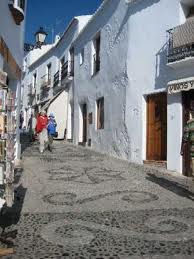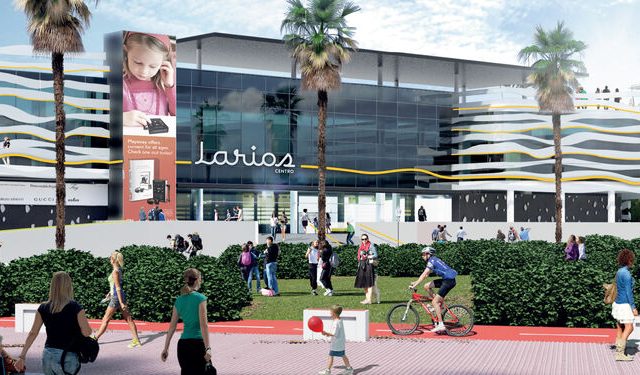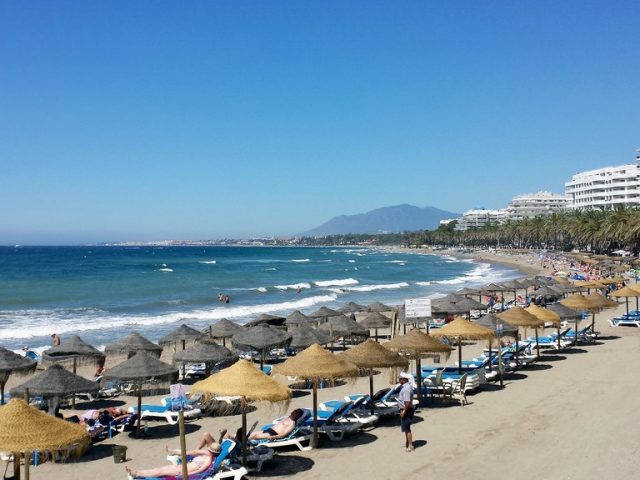- Have any questions?
- +34 951 273 575
- info@allaboutandalucia.com
Mijas: A village that has kept its charm

The hiking trails of Mijas
July 14, 2016
Discovering Ronda’s ‘hidden valley’
July 14, 2016 WITH a mug of piping hot tea in one hand and the leftovers of a steak and kidney pie on the table, Stan Boardman was in a terrific mood.
WITH a mug of piping hot tea in one hand and the leftovers of a steak and kidney pie on the table, Stan Boardman was in a terrific mood.
Now spending most of the year in Spain, it is no coincidence that the Liverpool comedian has chosen La Cala de Mijas to live.
“It’s one of the few places left on the coast that still has a local village feel,” he tells me. “There is still a very Spanish feel and people are friendly.”
Taking breakfast at Sully’s café in the heart of the village – a fridge-sized packet of Lambert & Butler cigarettes at his side – he was more than happy to shoot the breeze about his favourite Spanish resort.
Cafe owner John Sullivan had soon joined the conversation, as we discussed the Golden days of La Cala when the faces included Chris Tarrant, Rick Parfitt and Gerry Marsden, as well as celebrated gangsters ‘Mad’ Frankie Fraser, Kray minder George Dixon and, of course, Ronnie Knight, who got married at nearby El Oceano hotel.
It was certainly a heady mix and, as Boardman, who has a house in the village, quips: “I was at Banditos in Marbella with Mad Frankie and Freddie once… We had a great dinner of broken leg of lamb, bruised spare ribs and black-eyed peas.”
Celebrities and gangsters aside, there is no doubt La Cala truly comes alive in summer, the beach and its neighbouring restaurants buzzing for most of the day.
Still remaining defiantly low rise, its back streets and two storey terraced houses have maintained a distinct Spanish feel.
It is also testament to La Cala’s popularity that the vast majority of these homes have been in the same Spanish hands for decades.
“Apart from one street we call Coronation Street – which was built 20 years ago, and is full of English – most of the old part is Spanish,” explains Antonia Martinez, who was brought up in the town and owns fashion shop Coco.
“Unlike many other towns along the coast, most homes here have stayed in the family and pass from generation to generation. There is no way my family would sell to the English or Germans. That is why it keeps its ambience.”
But despite still keeping some of its original village atmosphere how things have changed.
Aside from the so-called Valley of Golf north of the busy A-7, the village now has two supermarkets, a car park – rarely less than 99 per cent full – and a string of bars, including Biddy Mulligans and Smugglers.
Indeed, it is only four decades ago that La Cala was little more than half a dozen cottages and a handful of fishing boats.
Have a look at the photos on page 31… they clearly show how sleepy the village was. Indeed, apart from the famous old watchtower, there was very little else.
Sand lapped at the foot of the ancient tower, which was part of a chain of lookouts along the coast to warn of impending pirate attacks, while on the other side open fields stretched up to the single track N-340 (now the A7), a thoroughfare that has existed since Roman times.
From here up to Mijas village there was nothing but rolling mountains and open fields given over to agriculture.
“It was incredibly sleepy here when I arrived from Ronda in 1970,” said Alberto Ramon, 67, who owns the Smugglers bar, a typical pub near the beachfront.
“I came here looking for work, but there wasn’t much about. There were no hotels and most people were incredibly poor and lived off the sea.
“Many of us worked in the fields above the main road, which were mostly given over to fig trees and vines.
“We used to dry the figs and grapes to make raisins and take them by donkey to Malaga.”
Almost all transport those days was by donkey, recalls Pepe Martin, 54, who has lived in La Cala all of his life.
“I was actually born in Malaga and my mother got there just in time with an hour donkey ride to Fuengirola, where she took the train,” he explains.
A gardener at Las Buganvillas urbanisation, he explains how back in the late 1950s most of the land in the area was split between two big families, the first a German family called Berne and the other a wealthy Malaga family called Cotrina, who between them owned most of the land up to Fuengirola and inland towards Mijas village.
“They had most of the land carved up between them and employed many local labourers.”
His family had a little bit of land of its own, where they grew vines to produce raisins.
“My grandfather used to own a lot of vines, but they all died when the phylloxera virus hit, but we grew other things as well and shared farming equipment with other families in the area.
“It was beautiful back then, the land was so unspoilt and the fields were full of life, we had an incredible time growing up here.
“If you had a little bit of land you could live very well, but if you lived in the town of Fuengirola with no land say, you would be pretty poor,” he explains.
It was in the 1960s with the advent of mass tourism that things finally started to change, albeit at a very slow pace for La Cala, which was largely untouched by the first wave of tourism that initially revolutionised the coastline towns of Torremolinos and later Fuengirola and Marbella.
While no hotels opened in the area until the 1970s, the first English started buying property in the 1950s, according to Anette Skou, head of the foreigners department at Mijas Town Hall.
One of the trailblazers was a retired army officer Major Wilfred Blake, who bought a large plot of land on the Mijas road.
He became a travel writer, wrote a number of books and even made a short 9mm film, which has recently been rediscovered.
Donated to the foreigners department, the film, produced between 1955 and 1960, clearly shows the incredible changes that have happened over the last five decades.
“It is a wonderful trip down memory lane, seeing everyone travelling by donkey and transporting fish up and down the coast,” explains Anette, who set up the department – the first in Spain – in 1985.
It was around this time that tourism really started to hit La Cala, but fortunately due to a combination of luck and good town planning the village was never built up in the same way as, say, nearby Fuengirola.
“It has managed to maintain the ambience of a small village by not allowing lots of hotels to be built along the beach,” explains Anette.
“In fact it is one of the only nearly virgin beaches left on the coast.”
For the sake of the once sleepy village, which still has some of its old vestiges, let’s hope it stays that way.
One English couple who have recently settled in the area sum it up well.
Alison and Peter Barber, a web designer from Southend, have long had a home in the area, but finally made the plunge last year.
“The facts are that La Cala is still pretty smart compared to a lot of other towns,” says Peter.
“It has changed a lot over recent years, but you can still walk around it easily and you don’t feel intimidated.
“But best of all there are not loads of football shirts with Rooney on the back.”



